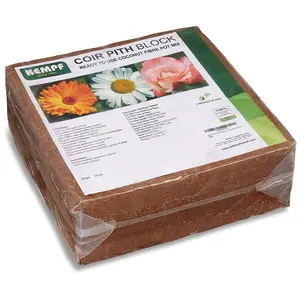
Hempf USA Canada Warehouse CE Certificate Low EC Briket Brick Coconut Fiber Wholesale Bulk 5kg Cocopeat
















Coconut coir fiber, a versatile natural product, is increasingly sought after in various industries. Derived from the husk of coconuts, coconut coir fiber in bundles is a sustainable material that offers a multitude of applications, from gardening to erosion control. This introduction delves into the essence of coconut coir fiber, its types, and its extensive uses.
The diversity of coconut coir fiber is evident in its types and features. Primarily, it is categorized based on its extraction process, resulting in different textures and lengths. The fibers are either long for increased strength or short for finer applications. Features such as natural resilience to water and microbial degradation make it a durable choice for various applications. Its natural brown and white hues are indicative of the fiber's minimal processing, emphasizing its organic nature.
The application spectrum of coir fiber bundles is broad, ranging from simple filling material to intricate uses in spinning. Its water retention capabilities make it ideal for horticultural purposes, while its strength is beneficial in making durable geotextiles. The adaptability of coconut coir fiber also extends to its use as a natural filler in the upholstery industry.
Sustainability is at the core of coconut coir fiber production. As a byproduct of the coconut industry, it utilizes material that would otherwise be discarded. The process of harvesting and bundling the fibers ensures minimal environmental impact, aligning with the global shift towards eco-friendly materials. The fibers are not only biodegradable but also contribute to the circular economy, reinforcing their position as a material of the future.
The advantages of using coir fiber in bundles are manifold. Its inherent properties, such as being flame retardant and chemical-resistant, make it a safe and durable option. Additionally, the fiber's elasticity and moisture resistance contribute to its longevity, reducing the need for frequent replacements and thus offering economic benefits.
In conclusion, coconut coir fiber in bundles represents a natural, sustainable, and versatile material with a wide array of applications. Its ecological benefits, coupled with its durability and natural resistance to various elements, make it an invaluable resource for industries looking to incorporate greener materials into their products.